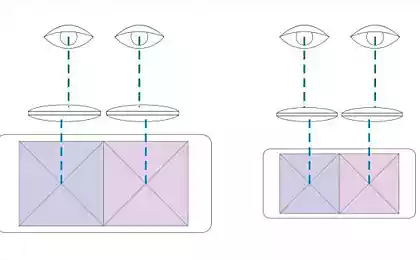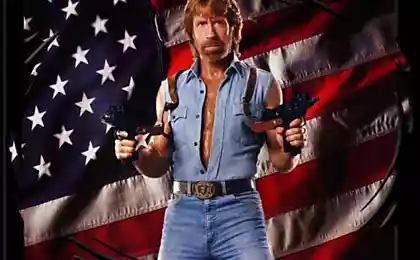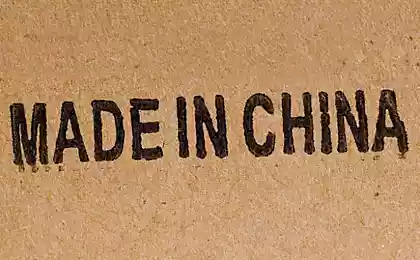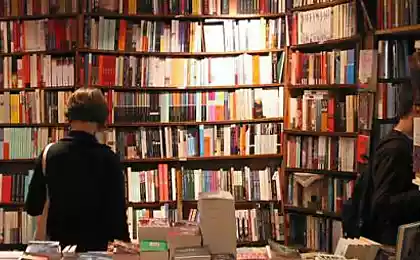474
Bi-directional LEDs will turn screens smartphone charger
Whether in the future the possibility of charging the battery of the mobile device from ambient light from an external source? The specialists of the famous Japanese company Kyocera, which specializes, among other things, on the technologies for producing solar energy, working together with scientists from the University of Illinois, demonstrated the opportunity. They created a kind of bi-directional LEDs, which are able not only to emit light but also absorb, turning it into electrical energy.

Matrix of bidirectional LEDs are composed of tiny nanostruc consisting of semiconductor materials of three different types. These nanocavity, with a diameter of about 5 nm, fixed on the surface of the thin film material. One of the semiconductor materials efficiently emits and absorbs light, and the remaining two serve as material for improving electrical current flow through the structure from the first material. This unusual combination allows the LEDs to efficiently emit and absorb light at the same time.
The mode in which the light emission is switched to the mode of absorption of light with a frequency three orders of magnitude greater than the refresh rate of conventional screens. It is completely invisible to the human eye and the person the impression that the screen is lit steadily and constantly.
In the mode of absorption of light by the LEDs behave like usual elements of solar panels, absorbing light due to the photovoltaic effect. Currently, the researchers were able to create a small prototype of the display on the new bi-directional LEDs, but the results of the tests of the prototype suggests that on the basis of this technology can be used to create displays that work solely by the received energy, provided a sufficient level of ambient lighting.

But creating displays that are energy self-sufficient, is a fairly distant prospect. However, this technology has practical application and right now. Displays built on the basis of bi-directional LEDs can act as light-sensitive sensors that will allow electronic devices to react in a programmed way to external light signals. This ability can be used to create interactive systems that can recognize who is in front of the screen objects and react to gestures before the human finger or the light pen touches the screen surface.
In addition to the above, the new displays will be able to adapt the brightness of the glow depending on the level and nature of exterior lighting. This technique of adjusting the brightness is already used in some modern laptops and smartphones, but implement it by means of a separate light sensor or camera sensor of this device. The technology of automatic adjustment of brightness can also be very useful in conditions of uneven lighting, for example, when using a smartphone in the woods bright day. "Smeared" on the surface of the display light sensor will adjust the brightness of each display pixel to compensate for the uneven illumination areas, illuminated by direct sunlight, and areas of display, in the shade cast by the leaves.
Currently, the researchers were able to only create a red bidirectional led. But they are already working on such led blue and green illumination, which is due to the accurate selection of the composition of the material nanocolumn and their geometric dimensions. In addition, researchers are working towards increasing the efficiency of the process of absorbing light and converting it into electrical energy. published
P. S. And remember, only by changing their consumption — together we change the world! ©
Source: ecotechnology

Matrix of bidirectional LEDs are composed of tiny nanostruc consisting of semiconductor materials of three different types. These nanocavity, with a diameter of about 5 nm, fixed on the surface of the thin film material. One of the semiconductor materials efficiently emits and absorbs light, and the remaining two serve as material for improving electrical current flow through the structure from the first material. This unusual combination allows the LEDs to efficiently emit and absorb light at the same time.
The mode in which the light emission is switched to the mode of absorption of light with a frequency three orders of magnitude greater than the refresh rate of conventional screens. It is completely invisible to the human eye and the person the impression that the screen is lit steadily and constantly.
In the mode of absorption of light by the LEDs behave like usual elements of solar panels, absorbing light due to the photovoltaic effect. Currently, the researchers were able to create a small prototype of the display on the new bi-directional LEDs, but the results of the tests of the prototype suggests that on the basis of this technology can be used to create displays that work solely by the received energy, provided a sufficient level of ambient lighting.

But creating displays that are energy self-sufficient, is a fairly distant prospect. However, this technology has practical application and right now. Displays built on the basis of bi-directional LEDs can act as light-sensitive sensors that will allow electronic devices to react in a programmed way to external light signals. This ability can be used to create interactive systems that can recognize who is in front of the screen objects and react to gestures before the human finger or the light pen touches the screen surface.
In addition to the above, the new displays will be able to adapt the brightness of the glow depending on the level and nature of exterior lighting. This technique of adjusting the brightness is already used in some modern laptops and smartphones, but implement it by means of a separate light sensor or camera sensor of this device. The technology of automatic adjustment of brightness can also be very useful in conditions of uneven lighting, for example, when using a smartphone in the woods bright day. "Smeared" on the surface of the display light sensor will adjust the brightness of each display pixel to compensate for the uneven illumination areas, illuminated by direct sunlight, and areas of display, in the shade cast by the leaves.
Currently, the researchers were able to only create a red bidirectional led. But they are already working on such led blue and green illumination, which is due to the accurate selection of the composition of the material nanocolumn and their geometric dimensions. In addition, researchers are working towards increasing the efficiency of the process of absorbing light and converting it into electrical energy. published
P. S. And remember, only by changing their consumption — together we change the world! ©
Source: ecotechnology
Samsung India will launch the world's first refrigerator powered by solar panels
Buses Scania are moving to electricity






















